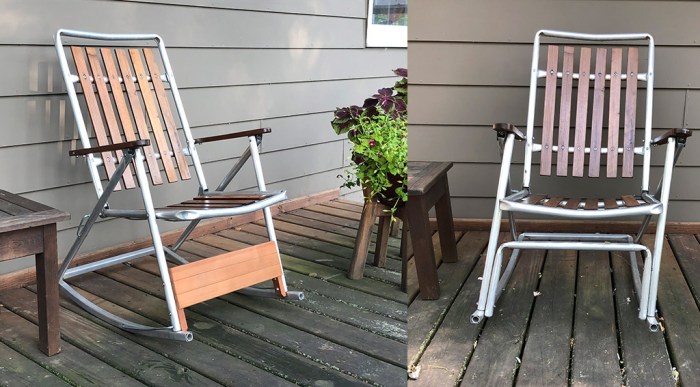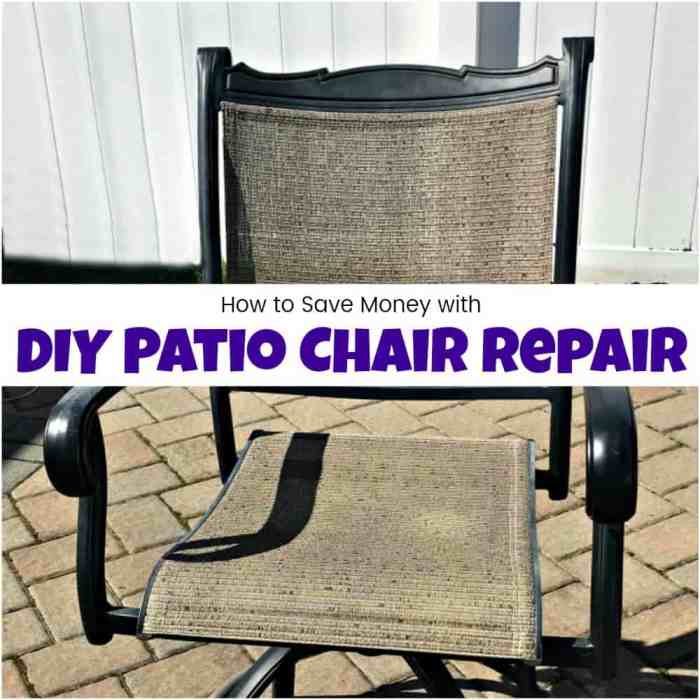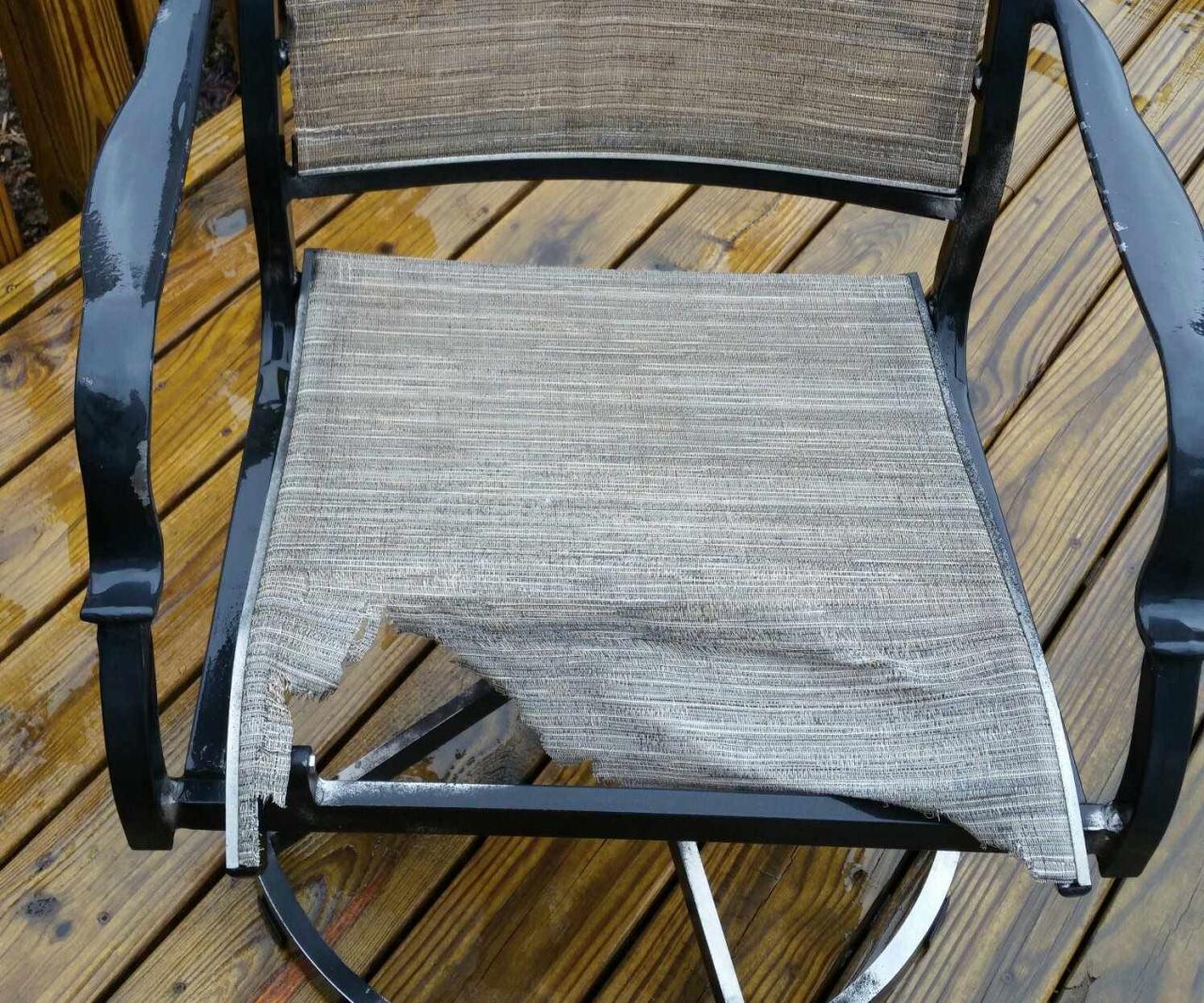Patio chairs are an essential part of any outdoor living space, providing comfort and style for relaxation and entertaining. However, exposure to the elements and regular use can take a toll on these chairs, leading to common problems like rust, fading, and broken parts.
Instead of replacing damaged patio chairs, it’s often more cost-effective and environmentally friendly to repair them.
This comprehensive guide will provide you with the knowledge and step-by-step instructions needed to tackle common patio chair repairs. We’ll cover everything from identifying problems and choosing the right materials to detailed repair techniques and preventative maintenance tips. By following these steps, you can restore your patio chairs to their former glory and enjoy them for many years to come.
Introduction
Maintaining patio chairs is essential for extending their lifespan and preserving their aesthetic appeal. Patio chairs are exposed to various outdoor elements such as rain, sun, and wind, which can cause damage over time. By regularly cleaning, inspecting, and repairing your patio chairs, you can prevent further deterioration and keep them looking their best.Repairing
patio chairs is often more cost-effective and environmentally friendly than replacing them. Replacing damaged chairs contributes to waste and can be expensive, especially if you have a large patio set. By repairing your chairs, you can save money and reduce your environmental impact.
Benefits of Repairing Patio Chairs
- Extends lifespan: Repairs can address damage and prevent further deterioration, extending the lifespan of your patio chairs.
- Saves money: Repairing chairs is often more cost-effective than replacing them, especially for high-quality or designer pieces.
- Maintains aesthetics: Repairs can restore the appearance of your patio chairs, keeping your outdoor space looking its best.
- Environmental sustainability: Repairing chairs reduces waste and contributes to environmental sustainability.
Common Patio Chair Problems and Solutions
Patio chairs, like any other outdoor furniture, are prone to various problems over time due to exposure to weather elements and regular use. These problems can range from rust and fading to broken parts, affecting the chair’s appearance and functionality.
Fortunately, many of these issues can be easily repaired with the right tools and materials.
In this section, we will discuss some common patio chair problems and provide detailed instructions on how to repair them, ensuring your chairs remain comfortable and aesthetically pleasing for years to come.
Rust
Rust is a common problem for patio chairs made of metal, especially if they are not properly maintained. Rust occurs when iron or steel comes into contact with oxygen and moisture, leading to the formation of iron oxide. Rust can weaken the chair’s structure and cause it to become unsightly.
To repair rust, you will need:
- Wire brush or sandpaper
- Rust remover
- Primer
- Rust-resistant paint
- Remove any loose rust from the chair using a wire brush or sandpaper.
- Apply a rust remover to the rusted area and allow it to sit for the recommended time.
- Rinse the chair thoroughly with water and allow it to dry completely.
- Apply a primer to the rusted area to prevent future rust.
- Paint the chair with a rust-resistant paint to protect it from the elements.
Tip: To prevent rust, regularly clean your patio chairs with a mild detergent and water. You can also apply a rust-resistant coating to the chairs to protect them from the elements.
Materials and Tools for Patio Chair Repair
Choosing the right materials and tools is crucial for successful patio chair repair. Here are the essential items you’ll need:
- Materials:
- Replacement fabric or mesh
- Upholstery foam
- Screws, bolts, or rivets
- Wood glue or epoxy
- Paint or stain (optional)
- Tools:
- Screwdriver
- Wrench or socket set
- Staple gun
- Hammer
- Measuring tape
- Sandpaper or wire brush
Tips for Choosing Materials and Tools: * Fabric: Choose a fabric that is durable, weather-resistant, and UV-protected. Consider the chair’s design and the outdoor environment.
Foam
Select upholstery foam that is firm enough to provide support but soft enough for comfort.
Hardware
Use screws or bolts that are the appropriate size and length for the chair’s frame.
Tools
Choose tools that are in good condition and fit the size of the chair’s hardware.
Step-by-Step Repair Guide
Follow these comprehensive instructions to restore your patio chairs to their former glory. Each step is carefully Artikeld to make the repair process effortless and effective.
Before starting, gather the necessary materials and tools, as Artikeld in the previous section.
Identify the Damage
Thoroughly inspect the patio chair to identify the type and extent of damage. Common problems include loose joints, broken slats, and faded or torn fabric. Once the damage is assessed, you can determine the appropriate repair technique.
Repair Loose Joints
- Tighten any loose screws or bolts using a screwdriver or wrench.
- If the joints are excessively loose, apply wood glue or epoxy to reinforce the connection.
- Clamp the joints together and allow the adhesive to dry completely before using the chair.
Replace Broken Slats
- Measure the broken slat and cut a new one from a suitable material, such as cedar or redwood.
- Sand the new slat to match the shape and finish of the existing slats.
- Attach the new slat to the frame using screws or bolts.
Refinish or Replace Fabric
- Remove the old fabric by carefully unstapling or unscrewing it.
- Measure and cut new fabric to fit the chair. Allow for a few inches of overlap around the edges.
- Stretch the fabric over the chair frame and secure it with staples or screws.
Preventative Maintenance Tips
Regular maintenance and care can significantly extend the lifespan of your patio chairs and prevent common problems. Here are some tips to help you keep your chairs in pristine condition:
Regular Cleaning
- Clean your patio chairs regularly to remove dirt, debris, and stains. Use a mild soap solution and a soft cloth or sponge.
- Avoid using harsh chemicals or abrasive cleaners, as they can damage the finish of the chairs.
- Rinse the chairs thoroughly with clean water after cleaning to remove any soap residue.
Regular Inspection
- Inspect your patio chairs regularly for any signs of damage, such as loose screws, cracks, or rust.
- Tighten any loose screws or bolts as soon as possible to prevent further damage.
- Repair any cracks or rust spots promptly to prevent them from spreading.
Protection from Elements
- Store your patio chairs indoors or under a cover when not in use to protect them from the elements.
- If your chairs are exposed to rain or snow, dry them thoroughly before storing them to prevent rust.
- Use a water-resistant sealant on your chairs to protect them from moisture and UV damage.
Preventative Maintenance Checklist
- Clean your patio chairs regularly.
- Inspect your patio chairs regularly for damage.
- Tighten any loose screws or bolts.
- Repair any cracks or rust spots promptly.
- Store your patio chairs indoors or under a cover when not in use.
- Use a water-resistant sealant on your chairs to protect them from moisture and UV damage.
Last Word
Repairing patio chairs is a rewarding project that can save you money and extend the lifespan of your outdoor furniture. By following the steps Artikeld in this guide, you can confidently address common problems, restore the appearance and functionality of your chairs, and ensure they continue to provide comfort and style for your outdoor living space.



